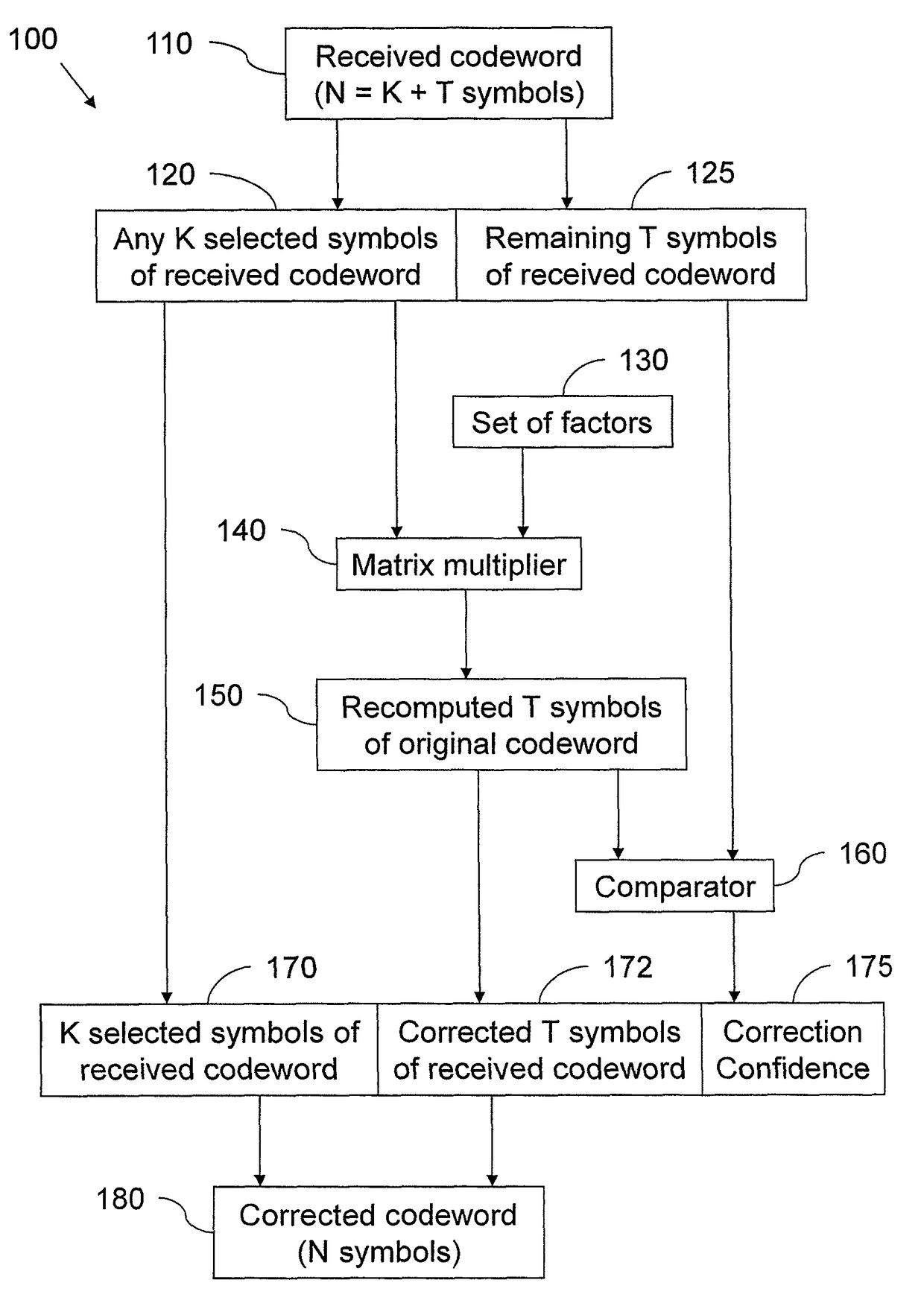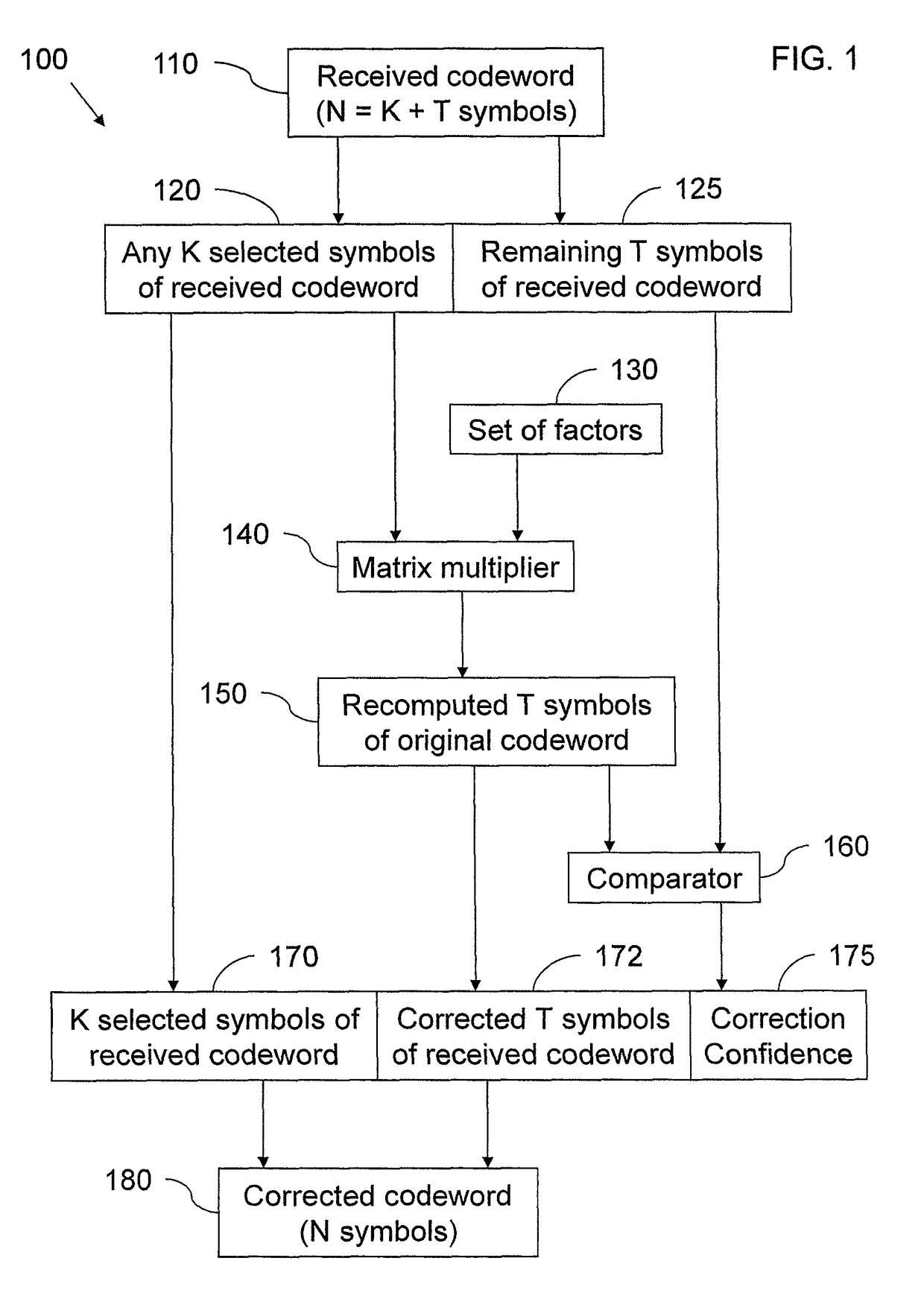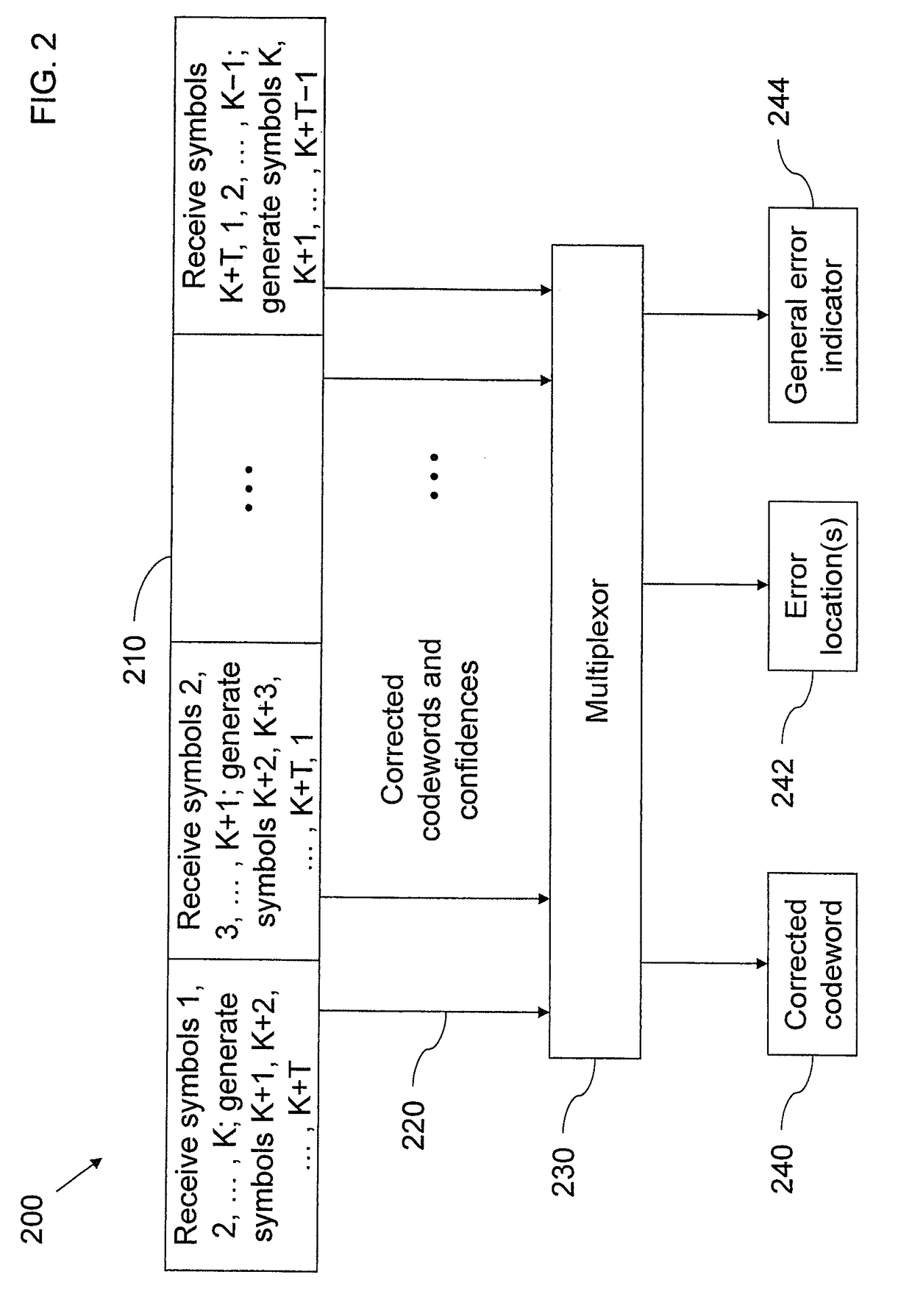Sliding window list decoder for error correcting codes
a window list and error correction technology, applied in the field of sliding window list decoder for error correction codes, can solve the problems of silent data corruption, ecc decoders (circa 1960) scaling badly, burst error lengths increase proportionally, etc., to speed up the processing of reed-solomon encoded codewords and eliminate many cases of silent data corruption
- Summary
- Abstract
- Description
- Claims
- Application Information
AI Technical Summary
Benefits of technology
Problems solved by technology
Method used
Image
Examples
Embodiment Construction
[0062]Hereinafter, example embodiments of the present invention will be described in more detail with reference to the accompanying drawings. In the drawings, like reference numerals refer to like elements throughout. Herein, the use of the term “may,” when describing embodiments of the present invention, refers to “one or more embodiments of the present invention.” In addition, the use of alternative language, such as “or,” when describing embodiments of the present invention, refers to “one or more embodiments of the present invention” for each corresponding item listed.
[0063]The present application relates to Reed-Solomon error correction, described more fully in the Reference application. Briefly, with Reed-Solomon encoding, data words of K symbols are encoded with an additional T symbols (parity symbols or check symbols) to produce codewords of N=K+T symbols. Each of these codewords has the extraordinary property that the entire N symbol codeword is reconstructable from any K o...
PUM
 Login to View More
Login to View More Abstract
Description
Claims
Application Information
 Login to View More
Login to View More - R&D
- Intellectual Property
- Life Sciences
- Materials
- Tech Scout
- Unparalleled Data Quality
- Higher Quality Content
- 60% Fewer Hallucinations
Browse by: Latest US Patents, China's latest patents, Technical Efficacy Thesaurus, Application Domain, Technology Topic, Popular Technical Reports.
© 2025 PatSnap. All rights reserved.Legal|Privacy policy|Modern Slavery Act Transparency Statement|Sitemap|About US| Contact US: help@patsnap.com



